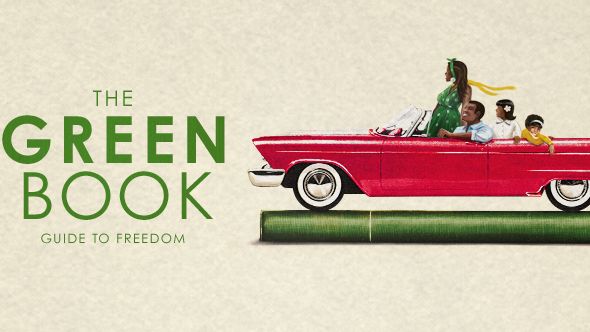
While accepting the Academy Award for best picture Sunday at the Oscar’s, “Green Book” director Peter Farrelly unwisely said Shinola was “saving” Detroit. The filmed had already been lambasted by critics for its tone-deaf depiction of race in America, yet still went home with three awards.
In the Oscar-winning film, the actual Negro Motorist Green Book is relegated to a background prop. The movie failed to tell the real story of Victor Hugo Green’s real-life Green Book that allowed African-American travelers in the mid-1900s to safely navigate a segregated nation.
The Negro Motorist Green Book was a travel guide for African-Americans that was published from 1936 to 1967, listing services and accommodations where African-Americans were welcome, including hotels, motels, gas stations, liquor stores, hair salons, taverns, tailors, and much more. It was published by a black postal worker, Victor Hugo Green, focusing on New York establishments first because Green was from Harlem. Later, the guide’s scope expanded as Green gathered tips from readers and other postal workers across the country.
Harlem native, Yoruba Richen, created a new documentary, “The Green Book: Guide to Freedom,” to tell the true story of the book. She was in Detroit Monday night to debut the documentary at the Charles H. Wright Museum of African-American History. The documentary also premiered on the Smithsonian Channel.
“Detroit was actually the first stop that we made in our shoot and when we were filming,” said Richen. “I knew that I wanted to highlight Detroit, because the story of Detroit was a big part of what the automobile meant to us.”
The Green Book eventually grew to a list of more than 9,500 safe havens across the nation, passing through a number of sundown towns, where African-Americans were prohibited. And while the South clearly was known more for segregation and African-Americans knew where to steer clear, the Green Book came in especially handy for black travelers in the North like Detroit, which was just as racist in its own way.
During the time the Green Book was published, African-American Detroiters lived in an area known as Black Bottom. Because of segregation and restrictive covenants in the city, they were not allowed to live where they wanted or be a patron at any business they wanted. African-Americans instead created their own utopia in Black Bottom and Paradise Valley, where hundreds of businesses, churches, nightclubs, clubs, hotels, barbershops, and beauty salons were owned by African-Americans. Many of them were listed in the Green Book, appearing for the first time in 1938. It listed nine black-owned hotels, one nightclub, and one service station in Detroit.
“At we sit here tonight in the museum, we are very close to many of the sites that were in the Green Book here in the city of Detroit,” said local educator and historian Jamon Jordan, who was also featured in the documentary. “We are around the corner from the Dunbar Hospital and it’s in the 1947 edition of the Green Book. We are down the street from the Mark Twain Hotel, which was owned by Sunnie Wilson, and a little further down, almost at John R. and Mack, was the Gotham Hotel. It shows up in the Green Book. And across from the Gotham was the Paradise Theatre, which is now the Detroit Symphony Orchestra.
“African-Americans are running the Paradise Theatre from 1941-1951, the Gotham (Hotel) opens in 1941 and is torn down in 1963, and the Pelican restaurant is three blocks away. Before the Charles H. Wright Museum was here, this was an area that was rich in the history of the Green Book and some of those places are still here.”

Other African-American establishments in Detroit listed in the Green Book included the Northcross Hotel, the Biltmore Hotel, Cleo’s Beauty Parlor, Davis Motor Company, Cobb’s Service Station, Barthwell Drug Store, Swanson’s Barber Shop, and the Brown Bomber Roadhouse which was owned by Heavyweight Champion Joe Louis. From 1938-1967, a total of 96 black-owned businesses appeared in the Green Book for Detroit.
At its peak, Green published 15,000 copies a year and families and friends would often share one copy and loan it to each other.
“The fact that part of the Green Book’s story was based in Detroit really brought back some memories,” said 85-year-old Clarence Harlen Jr., who remembered using the Green Book as a young man in the 1950s. “I can share with you many stories of the businesses listed in the book that we used to attend or patron back then. Detroit was and still is an important city for the history of blacks in this country.”
Although the film won an Academy Award, it was highly-criticized for its inaccuracies and the family of Don Shirley, the subject in the film, expressed their disappointment in the way he was depicted. Richen felt she and her team got it right with the documentary of the Green Book.
“I actually had no idea they were making the film,” said Richen. “It wasn’t until August 2018 that we started to hear about it. I did see the film and I would say, many movies that are about our black experience, we need to be the ones telling it. The way the Green Book is portrayed in the film was inaccurate and the places that they went to in the movie are dumps, not the finer black hotels that were around during that time.”
Twenty-two editions of the Green Book (and one supplement), published from 1937 to 1966, have since been collected and digitized by the Schomburg Center for Research in Black Culture at the New York Public Library.